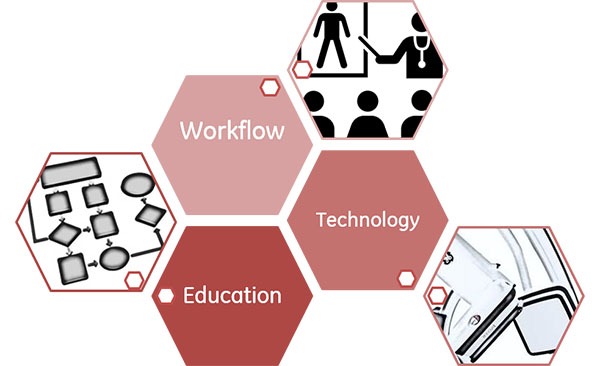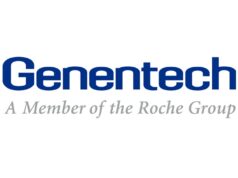
Advertorial
An interventional neuroradiology team has recorded significant improvement in time-to-treat in acute ischaemic stroke patients treated with mechanical thrombectomy over a five-year period. The time saved has been attributed to the implementation of the STEPS-T (Stroke Triage Education, Procedure Standardization, and Technology) programme using biplane angiographic systems (Innova IGS 630, GE Healthcare).
Ameer Hassan (Valley Baptist Medical Center, Harlingen, USA) and colleagues report their experience with the STEPS-T programme in Interventional Neuroradiology. According to the authors, STEPS-T is an integrated approach developed to decrease the total treatment time for stroke patients while maintaining quality of care and improving clinical outcomes. The programme was developed and implemented in their comprehensive stroke centre with the specific objective of reducing the time from stroke patient arrival at the hospital to recanalisation (door-to-recanalisation).
The theory behind STEPS-T is that interrelated inputs impact the speed and quality of care: (1) procedure workflow, (2) technologies, and (3) education. Further, using GE Healthcare technology, STEPS-T integrates “digital objects,” or macro-enabled systems, which record each workflow step and connect staff in the care pathway. To reduce treatment time, workflow in the biplane suite was divided into steps, and actions and actors of the intervention, (i.e. nurses, technologists, and physicians) operated in a parallel and standardised manner.
Hassan and colleagues assessed the value of the STEPS-T programme in a prospective registry of 230 patients treated with mechanical thrombectomy for acute ischaemic stroke between August 2012 and December 2016. The population included patients who presented with intracranial large vessel occlusion (LVO) or distal occlusion and were eligible for mechanical thrombectomy after undergoing a standard CT protocol (Alberta Stroke Program Early CT Score (ASPECTS) ≥6), confirmation of LVO on CT angiography, and absence of intracranial haemorrhage (ICH).
All procedures were performed using GE Healthcare’s Innova IGS 630 biplane angiographic systems equipped with 30cm x 30cm flat panel detectors on both planes and advanced imaging capabilities such as Cone Beam CT.

The investigators explain how the technology used afforded both ergonomic and workflow efficiencies: “The system is extremely customisable and custom built for our operators, dosing, image quality and exposure settings are all automated to improve speed/efficiency. The centralised joystick allows the operator to control the table and both planes with his right hand while advancing the guide catheter with his left,” Hassan told NeuroNews.
Workflow data were collected in a stepwise manner using macros assigned to each step in the care pathway. Times for each step were recorded as digital objects using GE Healthcare’s Mac-Lab Recording System, which enables use of customised step-by-step macro elements for collection of time stamps, device information, and medication administration. Overall times for each segment of the care pathway were obtained, including patient arrival at the centre, arrival time at the angiography suite, time of groin puncture, acquisition of first DSA, placement of microcatheter, and time of recanalisation.
The report states that, “Over the five-year study period, median door-to-biplane suite time was 66min (CI: 26min to 113.5min) and did not significantly change. In the same time, median total intervention time, i.e. from arrival in the biplane suite to recanalisation, was significantly reduced from 121 to 52min (p<0.001), as all steps of the procedure were shortened significantly, including setup (-39%), groin to first DSA (-37%), first DSA to microcatheter (-68%) and finally clot retrieval time (-64%). In the same period, annual recruitment increased from 12 (year one) to 66 patients (years four and five). Median admission NIHSS remained stable (18, 18, 17, 16 and 17) along the successive years. Clinical outcomes, as measured by 90-day mRS of 0 to 2, evolved from 36% during year one, to 52%, 76%, 71% and 59% the following years. There was a significant improvement between year one and year five (p<0.05). Looking at the last three years together, 90-day mRS of 0 to 2 was equal to 68%. There was no significant difference in recanalisation rates (TICI 2b–3) during the five years, although an increase happened between year one and two (75% to 91%, N.S.). Overall, 88% of patients had a successful recanalisation during the study period. Symptomatic intracranial haemorrhage rate was 8.7% (20 patients).”
In conclusion, uniquely, while other stroke workflow programs have focused solely on staff training, STEPS-T added digital technology to capture evidence in a user-friendly context, thus allowing clinical staff to further engage in workflow efficiencies that improve stroke outcomes. Hassan et al suggest that once adopted, STEPS-T can be customised to accommodate non-acute procedures to increase hospital throughputs and improve quality of care.
This advertorial has been sponsored by GE Healthcare










